What’s the Difference Between PLA, PDLLA, PDLA and PLLA Fillers?
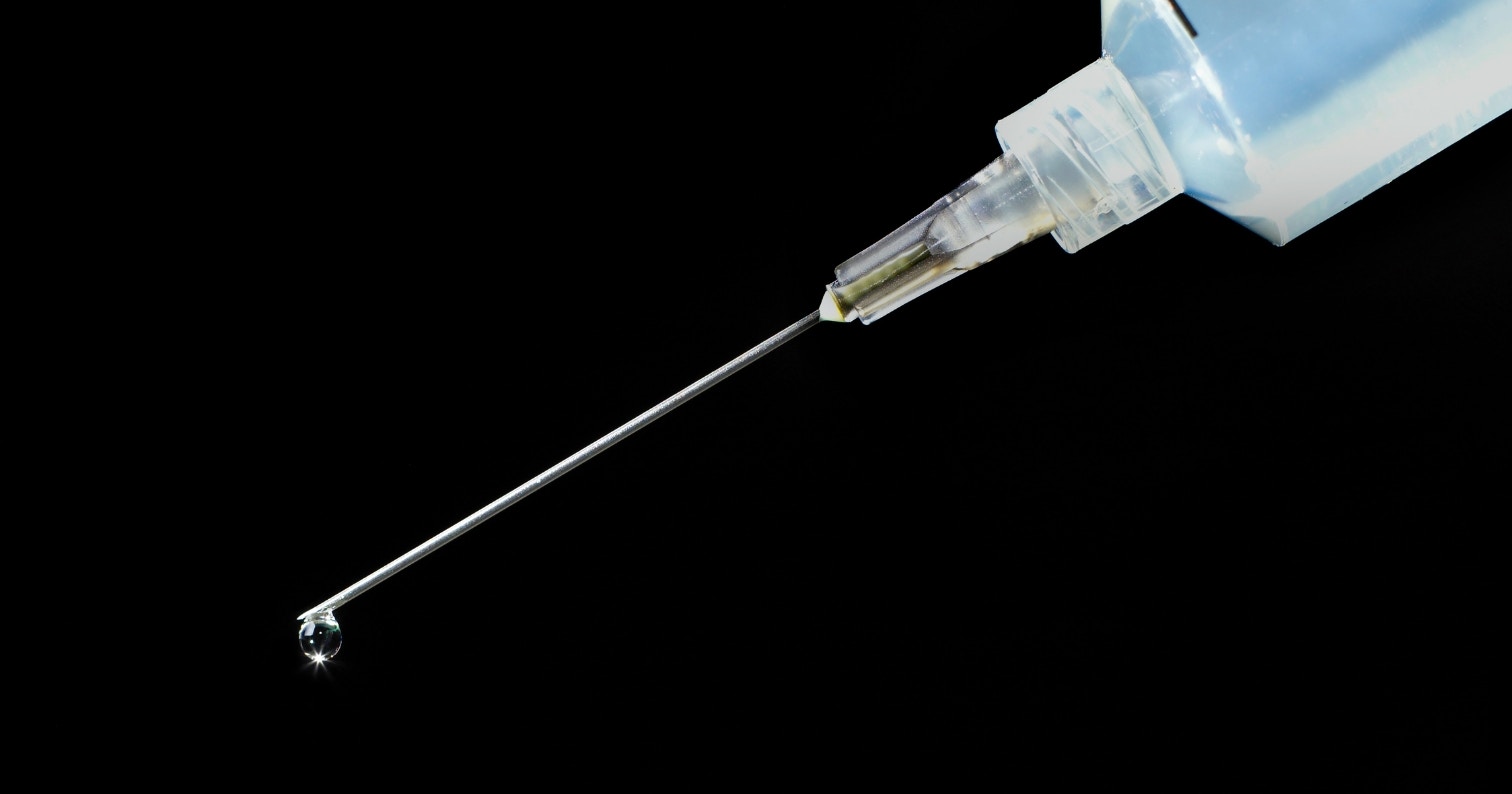
PLA, PDLLA, PDLA and PLLA fillers are non hyaluronic acid injectables you may have come across in your aesthetic journey. But what do they do and what’s the difference between them?
We spoke to clinical trainer and aesthetic medicine expert, Dr Janine Rothburn to find out.
Below you’ll learn the answers to these commonly asked questions regarding these next generation fillers…
- What are PLA, PDLA, PDLLA and PLLA fillers?
- What’s the difference between each of these filler types?
- How do these differ from hyaluronic acid-based soft tissue fillers?
- What are they used for?
- How do you inject PLLA fillers?
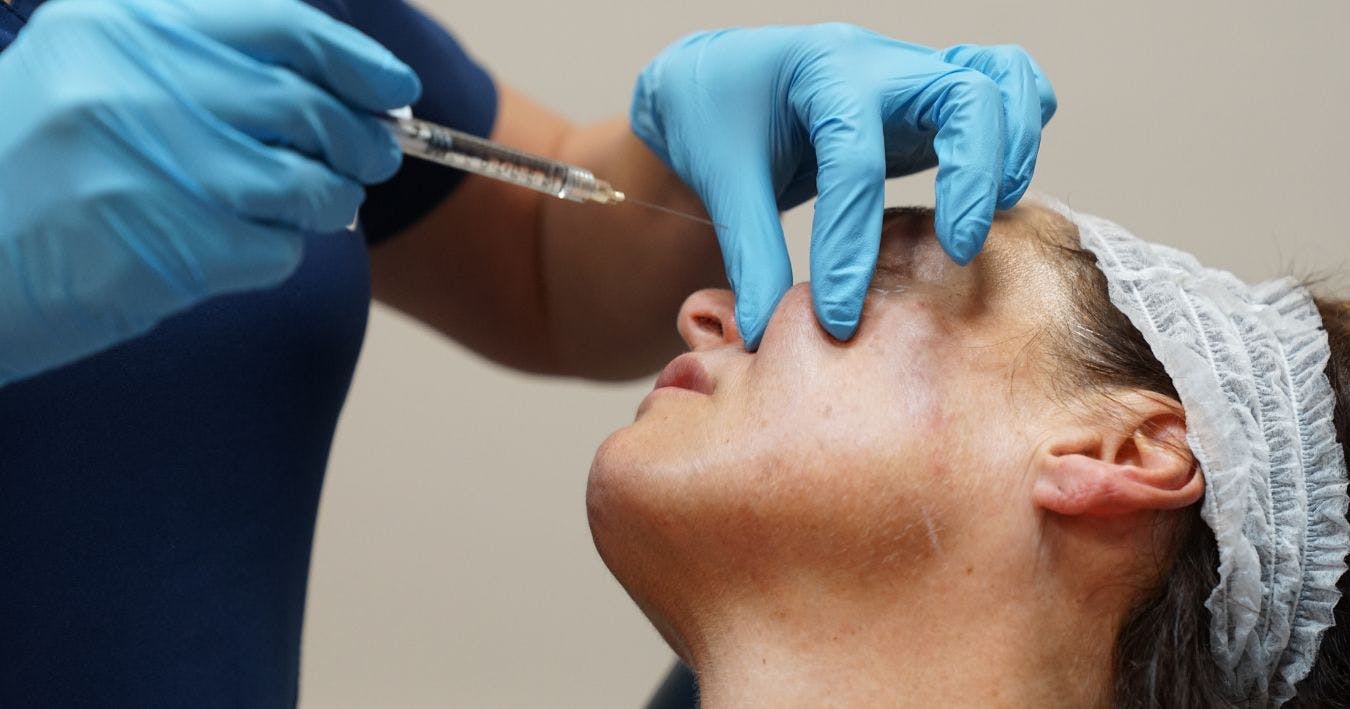
PLA, PDLA, PDLLA and PLLA Fillers: A Breakdown
These terms might seem confusingly similar but they all refer to different forms of polylactic acid (PLA).
The key difference between PLLA, PDLA, PDLLA and PLA fillers lies in their molecular structure. This centres on the arrangement of lactic acid molecules.
PLA is used in various medical applications including facial aesthetics. It’s also the generic name given to the ‘family’ of polylactic acid fillers. So when we talk about PLA fillers, this refers to the group encompassing PLLA, PDLA and PDLLA.
What are PDLA, PDLLA, PLA and PLLA fillers?
First of all, Dr Janine sets out what each of these names stands for:
- PLA (Polylactic acid)
- PLLA (Poly L-lactic acid)
- PDLA (Poly D-lactic acid)
- PDLLA (Poly DL-lactic acid)
“PLA, PLLA, PDLA and PDLLA fillers are made from synthetic, biocompatible, biodegradable polymers,” she advises.
“They can be used to restore volume loss in the face and body, as well as to stimulate collagen.”
This puts them in the popular and expanding category of collagen induction therapies. They are often referred to as stimulatory fillers.
What’s the difference between PLA, PDLA, PDLLA and PLLA fillers?
As we’ve established, PLA fillers refers to the group of polylactic acid-based stimulatory fillers. So let’s take a look at each of the PLA family members…
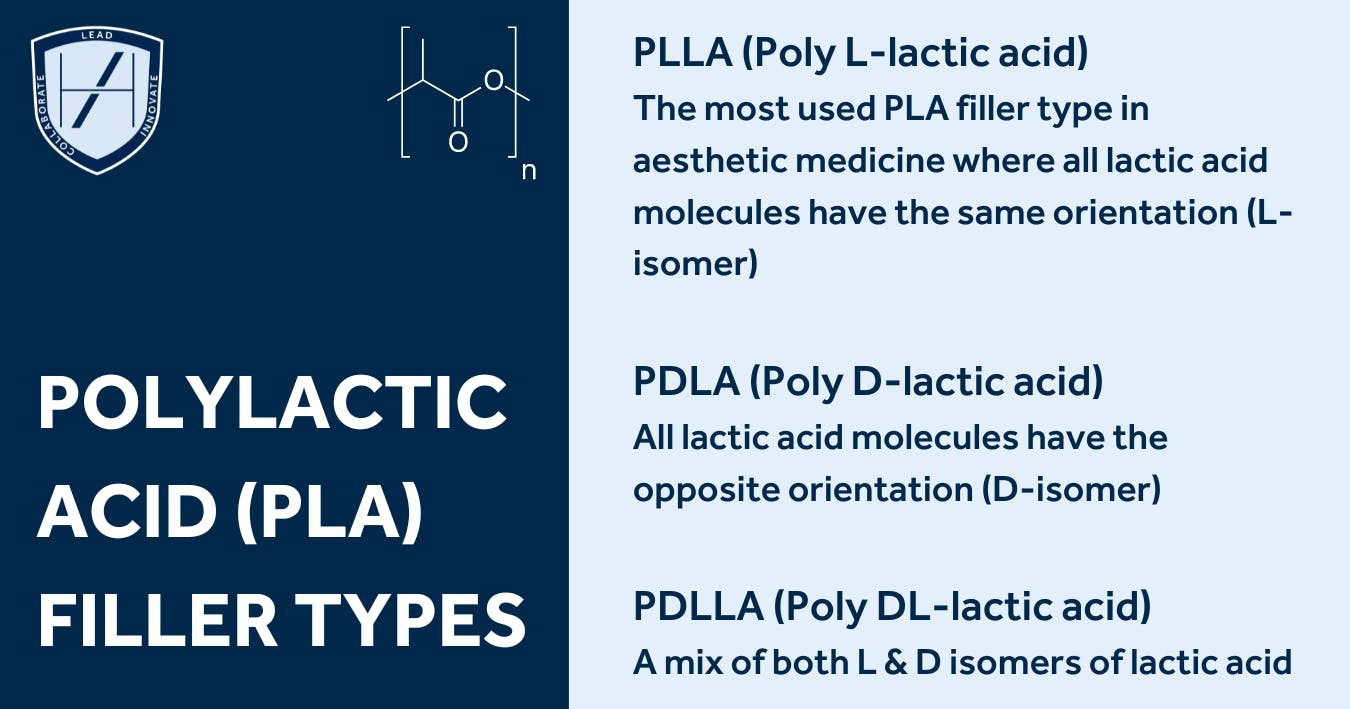
About PLLA fillers
PLLA involves all lactic acid molecules having the same orientation (L-isomer). Additionally…
- PLLA fillers are the most widely used PLA filler in aesthetic medicine
- Used for volume restoration, wrinkle reduction and overall skin improvement
- Offer excellent biocompatibility
- Provide significant collagen stimulation
- The most studied form of PLA.
About PDLA fillers
PDLA is formulated so that all lactic acid molecules have the opposite orientation (D-isomer). It’s also…
- Less studied than PLLA
- Generally associated with more inflammation and less collagen stimulation
- Not as commonly used in aesthetic medicine.
About PDLA fillers
PDLLA is a mix of both L and D isomers of lactic acid.
- Offers a balance between PLLA and PDLA properties
- Potentially provides a good balance of collagen stimulation and inflammation response.
- Emerging as a potential treatment option in facial aesthetics.
How do PLA fillers differ from hyaluronic acid (HA) based soft tissue fillers?
“While they may stimulate some collagen production, HA fillers primarily restore volume loss,” notes Dr Janine. “PLA fillers will volumise as well as stimulate collagen, acting as bioremodellers.”
“Essentially, traditional HA fillers will mainly only add volume, she confirms. “Whereas PLA fillers will restore volume loss plus stimulate collagen production. In some cases there can be visible skin tightening.”
If your patient’s goals include improving superficial tissue quality and texture as well as volume restoration, PLLA can be a good option - as mentioned, this is the most studied and most used form of PLA in aesthetics. Older patients with skin laxity make ideal patients.
HA fillers can be injected at various depths to help you achieve your patients’ desired outcome. PLLA can be injected from the deep reticular dermis to above bone.
“PLLA filler results should last up to two years, too, providing longer-lasting visible results compared to HA fillers. However, the impact is not as immediate as it is with HA fillers.”
PLLA patients will likely need to commit to more frequent treatments to achieve optimal results, compared to HA filler sessions. We’ll come on to this shortly, below.
Where do you use PLLA fillers?
“PLLA fillers can be used in most facial areas,” counsels Dr Janine. “Apart from the forehead, the eyelids, the tear troughs and the lips.”
Typically, PLLA is used to address deeper lines and volume loss in the face. It’s particularly useful for patients concerned about signs of ageing, due to its collagen-stimulating properties.
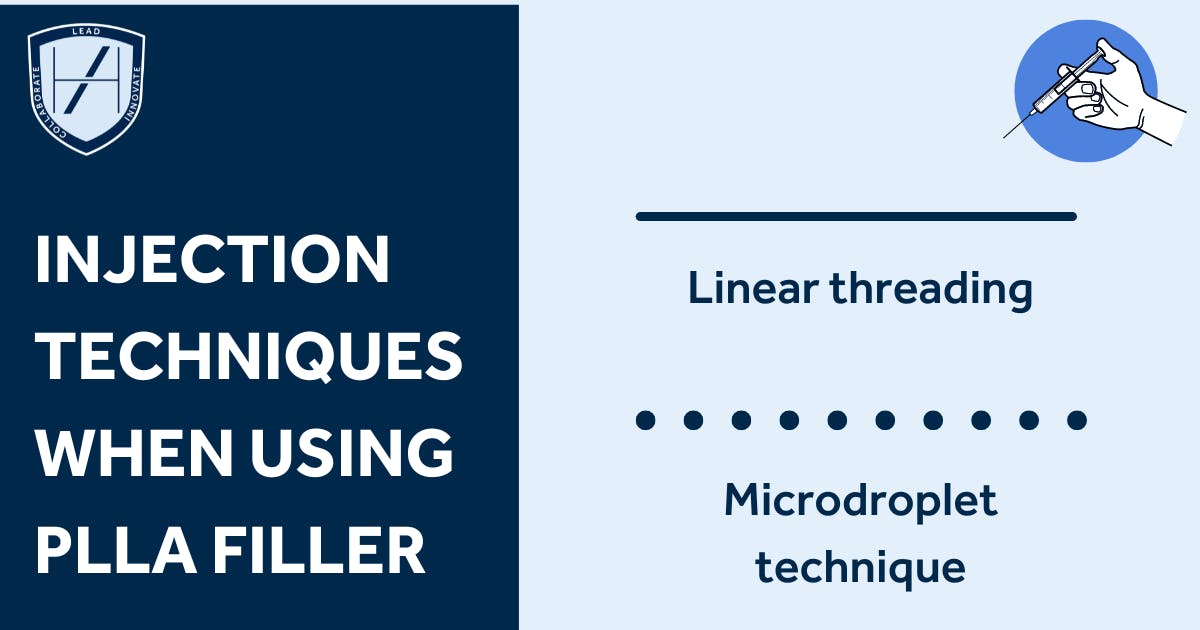
How do you inject PLLA fillers?
As the most commonly used PLA product in medical aesthetics, we asked Dr Janine how to inject PLLA fillers. Here’s her step-by-step guide…
1. Reconstitute the PLLA
“You can reconstitute PLLA fillers with sterile water for injection, local anaesthetic or both.” Do always pay attention to manufacturer guidelines.
2. Use a cannula to inject
“When injecting PLLA fillers, you can use needle or a cannula for the treatment. I advise using a cannula for safety and to minimise complications or adverse vascular events.”
3. PLLA filler placement
There are three main layers involved, here:
- Deep reticular dermis
- Subcutaneous tissue
- Supraperiosteal layer.
As your goal in using these biostimulators is to stimulate collagen down in the deeper layers of the face, you’ll generally be injecting into the deep reticular dermis and subcutaneous tissue.
The deep reticular dermis - the lower layer of the dermis - is where collagen and elastin fibres are found. By injecting PLLA here, you can effectively stimulate new collagen production.
We inject PLLA into the subcutaneous tissue, beneath the dermis, to restore volume loss.
In some cases, you can inject into the supraperiosteal layer which sits above the bone. This is for treating specific areas, such as the temples or cheekbones, to achieve more significant volume restoration.
4. PLLA filler injection techniques
The main injection techniques used for PLLA are:
- Linear threading
- Microdroplet technique.
Whilst Harley Academy does not currently teach specific PLLA filler courses, these are fundamental injection techniques. As such, they are taught on all our injectables courses.
For the most in-depth education in filler injection techniques, you’ll need our postgraduate level, Ofqual-regulated qualification. The Level 7 Diploma in Botox & Dermal Fillers is the pinnacle in postgraduate medical aesthetics training.
You’ll develop a thorough understanding of both the theory and practical aspects of becoming a competent and confident cosmetic injector. Through a carefully planned mix of self-paced eLearning and hands-on practical injecting with one-to-one mentorship, you’ll become adept at safe practice and producing covetable, natural-looking outcomes.
How safe are PLLA fillers?
PLLA fillers have a generally good safety profile in immunocompetent patients. They’re considered to be biocompatible, meaning they’re well-tolerated by the body.
However, as with any medical procedure, there are potential risks and side effects. Dr Janine details these below.
Your skill and knowledge as an aesthetics practitioner is also an important factor in determining the best treatment outcomes. Additionally, good patient selection will also play a role.
They cannot be dissolved with hyaluronidase, as hyaluronic acid fillers can be, so tend to be used by more experienced injectors.
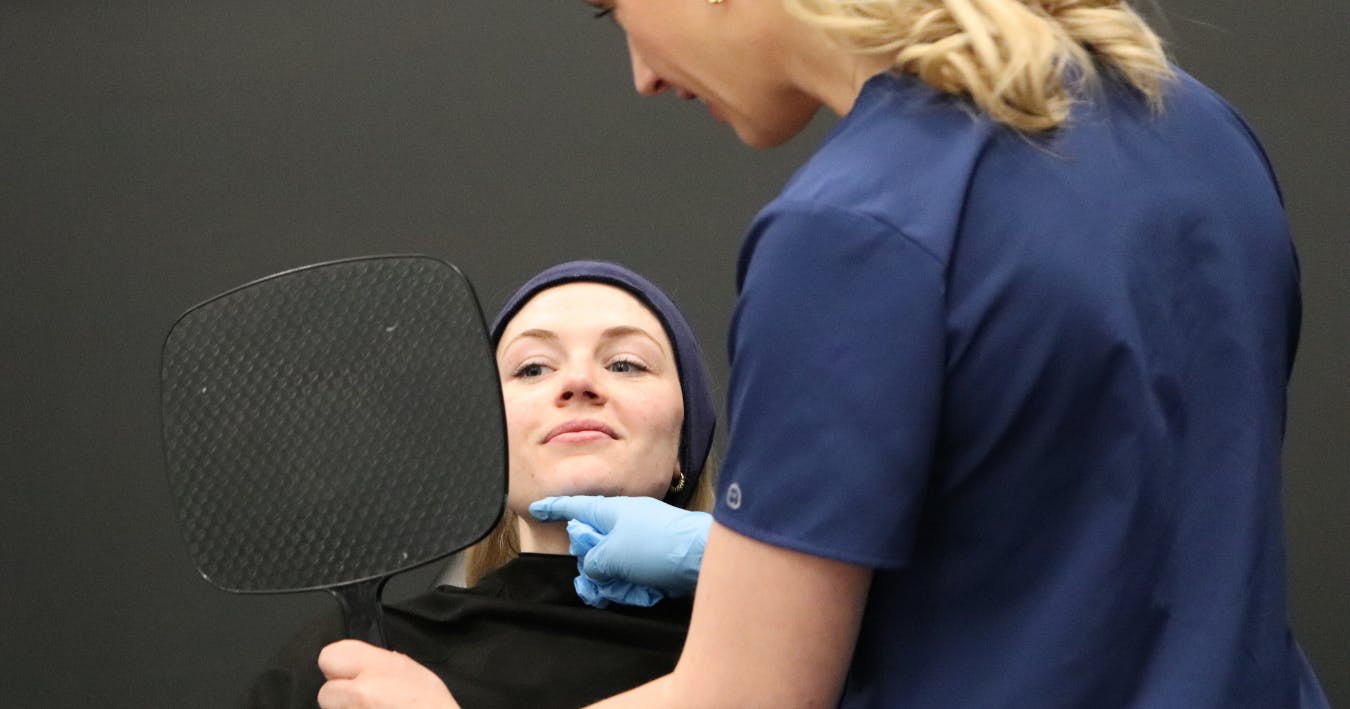
What are the potential side effects of PLLA fillers?
Dr Janine outlines possible adverse events following PLLA fillers, from the mild and commonplace to the more serious and rare.
- Mild swelling for several hours after treatment
- Redness that is transient
- Bruising
- Delayed onset nodules
- More significant swelling
- Allergic reactions
- Vascular events such as occlusion
- Blindness.
As always, you must inform your patients of all potential outcomes and risks associated with their treatment before they consent to it.
It’s also worth noting that, whilst PLLA fillers are considered to be the ‘gold standard’ in PLA biostimulatory injectables, research is still ongoing.
How long does it take to see results from PLLA fillers?
When offering biostimulatory filler options to your patients, it’s important to make them aware of what this involves.
“If patients are expecting instant results, biostimulatory fillers are not for them. Collagen stimulation can take weeks and months to see results,” stresses Dr Janine.
As she highlights, if a patient wants instant improvements, PLLA is not a viable option. Due to the time it takes to stimulate the body’s natural collagen production, results from PLLA fillers are gradual.
HA fillers offer immediate gratification whilst your PLLA patients may start to notice subtle improvements at the 4-6 week mark post-treatment. However, peak results are likely to occur after 2-3 treatment sessions which should be spaced around 4-6 weeks apart.
Whilst more appointments and treatments are required, the results should also last longer than HA fillers. There’s the added bonus of the biostimulatory response, too. However, these are factors your patient will need to be fully informed of in order to make the best decision about which treatment they want.
All information correct at the time of publication
Download our full prospectus
Browse all our injectables, dermal fillers and cosmetic dermatology courses in one document
By submitting this form, you agree to receive marketing about our products, events, promotions and exclusive content. Consent is not a condition of purchase, and no purchase is necessary. Message frequency varies. View our Privacy Policy and Terms & Conditions
Attend our FREE open evening
If you're not sure which course is right for you, let us help
Join us online or in-person at our free open evening to learn more
Our Partners




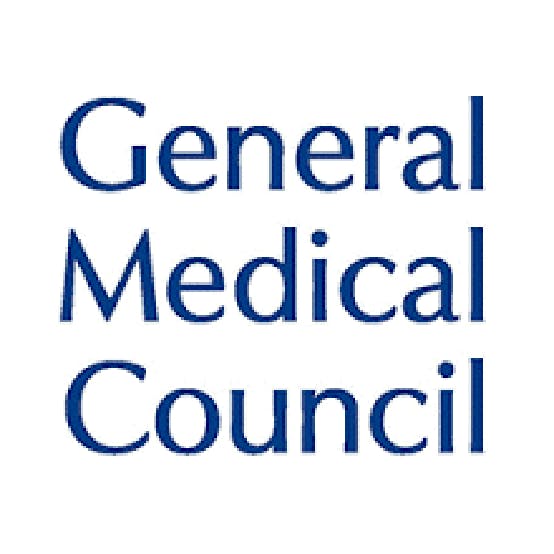









STAY INFORMED
Sign up to receive industry news, careers advice, special offers and information on Harley Academy courses and services

